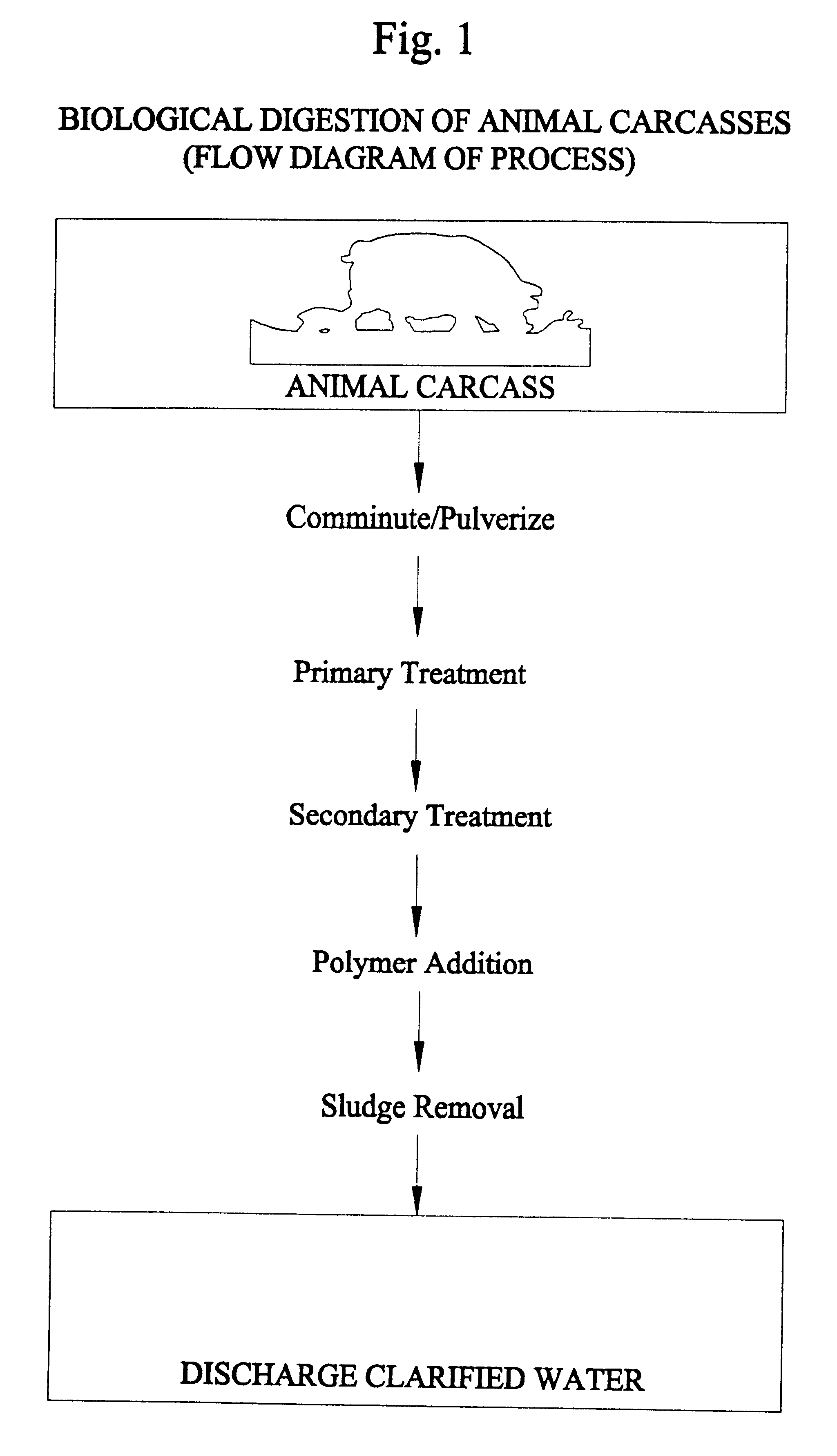Biological digestion of animal carcasses
a technology of animal carcasses and biochemical digestion, which is applied in the field of biochemical digestion of animal carcasses, can solve the problems of difficult handling, transportation and disposal of dead animals, contributing to a "smelly, stinky mess, and time-consuming process
- Summary
- Abstract
- Description
- Claims
- Application Information
AI Technical Summary
Benefits of technology
Problems solved by technology
Method used
Image
Examples
example
Testing of the process was conducted at facilities in Cape Canaveral, Fla. between March 1999 and July 1999.
To simulate the process, five pounds of ground pork were added to 50 gallons of tap water in a small open basin. 500 ml of Type P bacteria were added to the mix. The simulated wastewater was mixed in an 80 gallon open top plastic reservoir. Wastewater was taken from the bottom of the reservoir, pumped through the venturi to provide sufficient aeration, and returned to the reservoir at an angle for better mixing and circular motion. It was determined that each pound of meat has an equivalent of an average of 750 mg / L of Chemical Oxygen Demand once it gets dissolved in 50 gallons of water.
COD is a measurement of the total amount of organic matter in a waste stream. The COD measurement in this example indicates the meat from pork has a high COD primarily resulting from the protein and fat content. The 750 mg / l COD / lb. of meat in the initial concentration translates to a COD of 3,...
PUM
| Property | Measurement | Unit |
|---|---|---|
| diameter | aaaaa | aaaaa |
| pressure | aaaaa | aaaaa |
| pressure | aaaaa | aaaaa |
Abstract
Description
Claims
Application Information
 Login to View More
Login to View More - R&D
- Intellectual Property
- Life Sciences
- Materials
- Tech Scout
- Unparalleled Data Quality
- Higher Quality Content
- 60% Fewer Hallucinations
Browse by: Latest US Patents, China's latest patents, Technical Efficacy Thesaurus, Application Domain, Technology Topic, Popular Technical Reports.
© 2025 PatSnap. All rights reserved.Legal|Privacy policy|Modern Slavery Act Transparency Statement|Sitemap|About US| Contact US: help@patsnap.com



